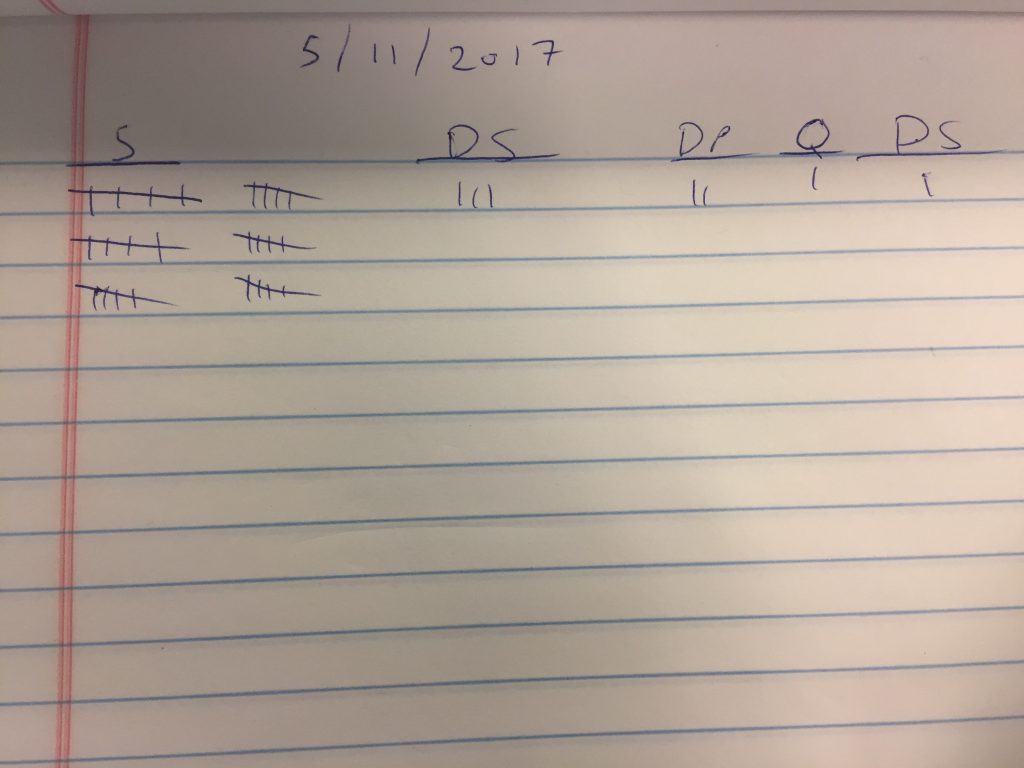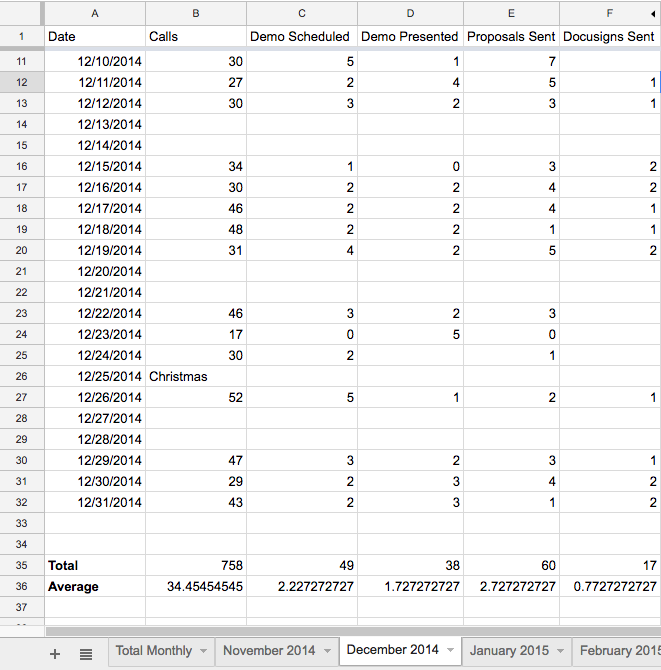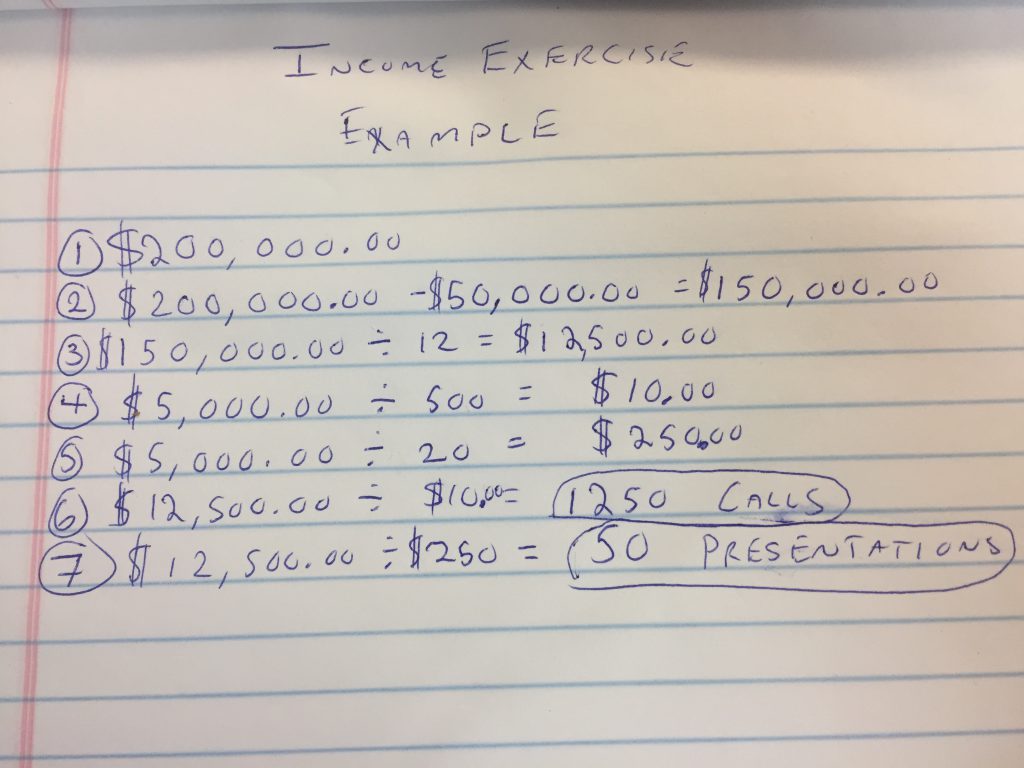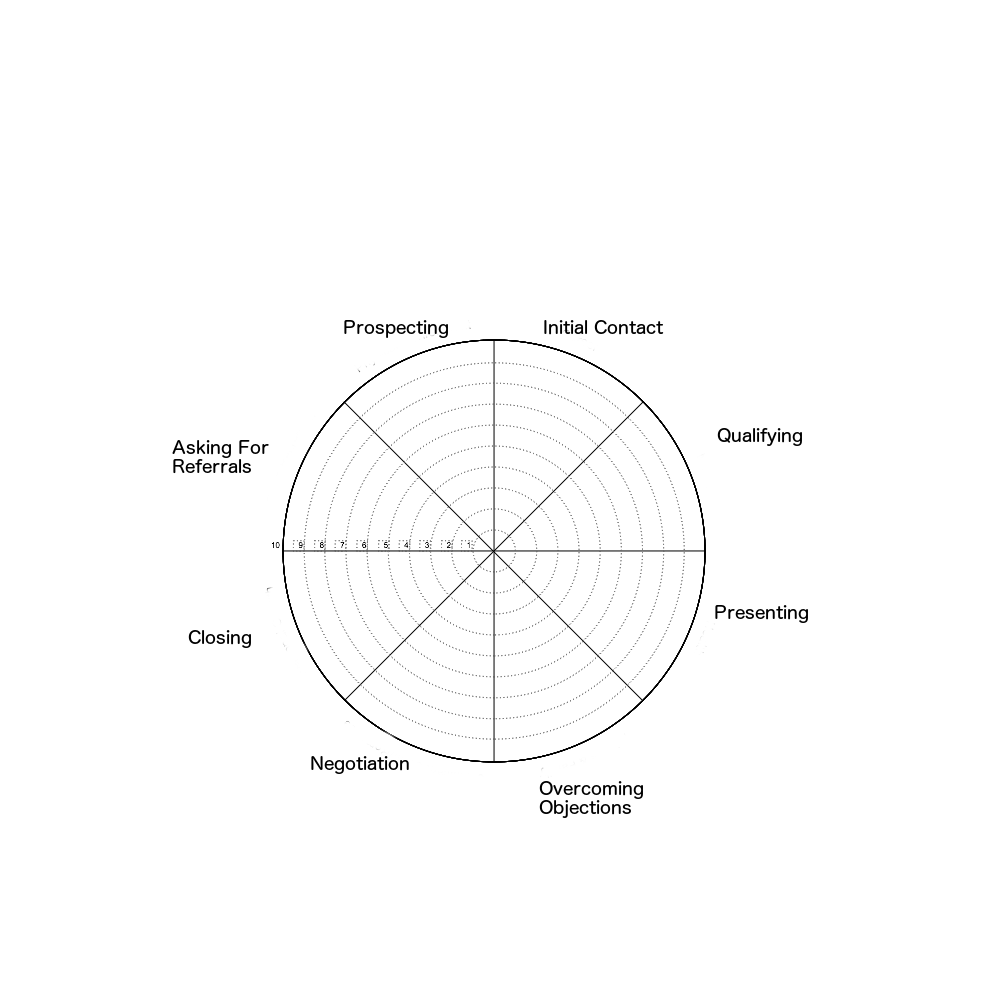Prospecting Is A Mindset
I once had someone ask me in a job interview: “Dan are you a hunter or a farmer?
I replied “I’m a hybrid. I love to run around on the grasslands with a spear and hunt Woolly Mammoth! I’ll also hunt the smaller game to ensure a constant food supply”
“I also love to farm, I love to plant crops and tend to them and watch them grow, I love to see the seasons change and store grain during the winter and sell grain futures. I expand the farm as needed with the profits of the grain and different crops. At a certain point I’ll even hire other people to work the farm during the busier months”
Top performers in the industry are always on the hunt for more, leads. Not only that they are always farming the existing relationships they have, for more leads.
Top performers are both hunters and farmers.
Before we get to the different prospecting tactics that I’ve used to become a top performing sales person at multiple companies, I’d first like to mention that prospecting and generating your own leads is not just a strategy it’s a mindset.
The easiest person to fool is yourself and I’ve seen countless sales people fool themselves into thinking that they are above prospecting or that prospecting is beneath them.
There is a myth that all you need to do is put people on email drip campaigns and setup a website and market it and then you will have all these inbound leads that will come beating down your door and the sales person can just sit back and become an order taker and not really have to do any hard work or even call anyone for that matter.
While I love inbound leads, there is a massive untapped market out there that needs to be aggressively courted and hunted. They will never seek you out, the only way you will be able to do business with them is if you reach out to them continually.
And the only way you will get the majority of your referrals is if you actually ask for them and cultivate the existing relationships that you’ve built. The sale is not done when the sale is made, that is when it just begins. The true rewards in sales are from long term relationships built on a foundation of trust.
And yes you will get some response to your email campaigns. I am not saying you won’t. Another part of the myth is that cold calling is dead. Or that you you can’t cold call anymore.
Cold calling is not dead, it’s alive and well and it’s a great way to build a business.
Especially if you don’t have a marketing budget and especially if you are not using OPM (Other People’s Money).
Don’t be afraid to pick up the phone. Top performers have this belief:
“I love cold calling in the morning!”
“I love cold calling in the afternoon!”
“I love cold calling in the evening!”
And
“It’s a pleasure to make cold calls!”
You might be thinking to yourself “Well if it’s so easy Dan, then why am I not picking up the phone?”
It could be the toxic limiting belief that it’s not going to work out. Or the toxic limiting belief that you are above prospecting or the toxic limiting belief that prospecting is beneath you as a person. These are toxic limiting sales killing beliefs and I recommend you do everything in your power to change immediately
(Check out my post on sales beliefs here.)
And if it’s not a toxic limiting belief about prospecting the answer is fear.
Fear is the biggest killer of sales out there.
What is the quickest way to eliminate fear?
Preparation.
If you are prepared prior to the cold call it becomes a lot less cold and a lot less scary.
Imagine if I asked to jump off a 20 foot cliff into water and you have no idea how deep the water is.
What is the feeling in your gut as you look over the edge?
How do you breath?
What do you see as you look over the face of the cliff into the murky blue green water below?
What do you hear going through your head as you prepare yourself to take the plunge?
What do you say to yourself as you look over the edge?
Would you do it?
Now imagine you’ve just seen all of your best friends jump into the water with no problem and they are having the time of their life playing in the water and they do it over and over again, just relaxing and enjoying the water.
What is the feeling in your gut as you look over the edge?
How do you breath?
What do you see as you look over the face of the cliff into the relaxing and cool waters below?
What do you hear as your friends cheer below?
Isn’t it a much different experience when you remove fear from the equation?
It’s the same with cold calling, if you know details about the company before the call it removes the majority of the fear or eliminates it all together.
Cold calling is like a muscle the more you call the more you like it.
The more you call the more money you make.
The more you call the more confidence you have you can call.
The more you call the more confidence you have you will call.
The most important tool you have that’s outside of yourself is………….. Survey says, your phone.
The phone is the great equalizer.
The phone should be the closest thing to you on your desk.
Scoring – Make Something You Consider Boring More Entertaining
In the hunt for new prospects sometimes the monotony of looks for lists of people to pursue is the major challenge that stops sales people from prospecting on their own.
One way to make finding prospecting lists highly enjoyable and fun for you, so that you love it and it’s part of your DNA is to pick verticals that you are actually interested in prospecting into. When I was at Amazon.com. At the time I was very interested in being a DJ and I would prospect different DJ equipment manufactures and merchants.
The more you focus on prospects you are interested in the more successful you will be at it.
No matter what the process is you can make it more enjoyable by scoring the process. What do I mean by scoring?
Think of scoring like you are Hans Zimmer, and you have the ability to score the sound track to a movie.
What kinds of sounds could you add.
Or what kind of visuals could you add, or what kind of feelings ?
For me one of the most powerful impacters for me personally is sound.
Whenever I’m working on a project that I think could use a better sound track I add music.
Having challenges running up hill?
Put in the rocky theme.
Having a challenge prospecting?
Think of your favorite activities and your favorite music. The act of prospecting is going to feel more enjoyable and more fun.
Prospecting Strategy
Never forget the importance of prospecting. No matter how far you progress in your career as a sales person never forget the value of a lead or how to create one.
Who is more valuable to the marketplace a sales person who can generate and create their own leads and opportunities or a sales person who simply waits for leads to be distributed to them through sales development and marketing?
The answer is obviously the sales person who can generate their own pipeline and build out a list of their own prospects.
A lot has changed in the sales Industry in recent times. The book
Predictable Revenue talks about the virtue of splitting out prospecting to the sales development team, and splitting out closing to the account executives. I believe from a process and management perspective this makes sense especially if you are looking to scale a large sales team.
Now if you are a not in sales management and are a sales person and you want to develop an mediocre income and live the life of an average sales rep, don’t do any of your own prospecting.
Repeat if you want to live the life of an average sales rep don’t prospect.
And
If you want to make a tremendous income and live an amazing life you must do your own prospecting.
In the words of Andy Grove the former CEO of Intel in his book
High Output Management, when it comes to management he says to make sure your are delegating not abdicating a task.
Don’t abdicate lead generation.
The truth is sales development will generate leads for an account executive and the truth is these leads are most likely projected to get you exactly to your quota and no more. To absolutely destroy your quota you must have a prospecting system of your own. You must hone your prospecting skills and dedicate time each day to bringing in leads. After all the more leads you have the more opportunities you have.
Prospecting must be a habit you cultivate.
And this also brings up an interesting point, let’s say you get only 20 leads per month.
How likely is it that you will try out new strategies/tactics to try to improve your sales process?
The answer is that most people when working a limited amount of leads will stick with their comfort zone and not try new things.
If you have unlimited leads to call on it becomes much easier to increase your skill at a higher rate.
Imagine you only do one demonstration a day. At the end of the month you’d have about 20 demonstrations that you had completed.
Let’s now imagine you did 5 demonstrations in a day on average.
You’d be at 20 demos in 4 days. And you would rapidly become a better presenter than the person doing one a day by sheer repetition. Repetition is the mother of skill.
The real question is as a sales person is this, how do you build a prospecting systems that works to generate the income you desire?
Here are a few different prospecting Tactics that have worked wonders for me over the years, not every single one will be suited for your exact sales situation but they all have value.
Remember the more prospecting systems you build the more money you’ll make!
Prospecting Tactics that work:
4-Hour Work Week Style Prospecting – Thank You Tim Ferriss
1) Find a list of prospects, they are everywhere look on the internet. To be more specific check out different trade associations or think about where your prospects might hang out and congregate.
2) DO NOT COPY AND PASTE into a spreadsheet yourself. I’ve seen many sales people think their job title includes data entry. If you spend all your time entering data into a spreadsheet, how are you going to have time to sell?
3) Hire someone / (delegate) the creation of the list to someone else. Check on
Upwork.com to find someone to do this for example. if you want to be in sales, part of being a top performer is time management. Should you spend time copying and pasting or paying someone to do this? Pay someone to do this.
4) Upload Data into Salesforce or your CRM of choice.
5) Write a compelling intro email script.
6) Send out the emails to about 200 people per day. If you build a list of 2k I’d really recommend not hitting the entire list at once.
7) The INSTANT you get an email back, call the prospect directly on the phone. The longer you wait to call the more likely you will loose this lead.
This is an easy way to maximize the use of your time and build a secondary lead pool that no one else has access to except you.
Education Based Marketing
The prospect hunting tactic comes from the Chet Holmes sales masterpiece
the Ultimate Sales Machine. Imagine you have an entire stadium that you have filled with you ideal clients. What presentation would you give to them? You must be ready to give this presentation at any time. Read Chet’s book to get the full story.
This tactic is better for more complex sales. I’ve used this tactic specifically at marketing agencies. It can also be used at in person events instead of via webinars. In person works even better!
1) Build a prospecting list using steps 1 through 5 from the 4 Hour Work Week method above.
2) Create a piece of education material that adds massive value to your target market. This cannot be a presentation where all you do is attempt to “sell” your clients. It must be an educational piece that provides them with something of value.
3) Invite your list to your Educational Webinar or In-person Seminar
4) Have some type of special incentive at the very end of the educational material. A free analysis or special promotional incentive for attending could be different ideas, use your creativity.
5) Continue the educational webinars / seminars and continue adding value. The frequency should be once per week or every other week. If you can’t swing that it must be at least once a month.
This tactic works great for longer sales cycles and getting into larger accounts. The core idea is to position yourself as a thought leader and an expert in the field that will add value to the relationship before the relationship exists. This is a great way to pre-frame your clients on what they can expect.
Referral Partners/Network
This prospect farming tactic takes time. It is well worth the wait as It builds on itself. This works really well when you have committed to staying in a specific industry. If you are a job hopper mercenary… I see you out there… probably best to skip this one.
1) Find lists of businesses who your ideal clients potentially work with. You want to find companies that have their own large book of business and who’s book of business is filled with your ideal type of clients. This could be marketing agencies, IT consultants, payment processors, law firms, anyone that your prospective client potentially would do business with.
2) Create a referral bonus program where you pay a set amount per referral that turns into business. If your company does not already have some form of referral bonus create this on your own or sell the idea to the marketing department.
3) Create a presentation on how specifically you can add value to their book of business that also highlights your referral bonus.
4) Reach out to as many of these potential referral partners as possible.
5) Ensure your referral partners are paid timely and on a regular basis.
A few keys to this strategy, let them know it’s a two way street and you will refer business to them as long as it is a good fit and it matches their ideal client profile. Ask them who specifically is their ideal client so you know who to look for and let them know what specifically is your ideal client profile as well.
There will be some Marketing Agencies and Consultants who are against receiving a referral bonus because there can be a conflict of interest. Let them know they can be fully transparent with their client and simply credit the client account back the referral bonus in order to maintain their neutrality, this is simply a way that they are able to add value by linking them up with potential partners.
Thank You Note Referral Prospecting
This is an old school referral tactic that works spectacularly. It works even better now because most communication is now electronic instead of through the mail. This is why direct mail has had a huge come back in recent years in terms of response rate.
1) Buy thank you cards on Amazon.
2) Buy Starbucks cards or gas cards ( The increment depends on how much a new client is worth to you). Any small gift will do here.
3) Write a hand written thank you note to every single new client you sign up for your product or service.
4) Mail the thank you note with the gift card and five of your business cards. Make sure to ask specifically in the note for the client to refer their friends, family, and business associates.
Business Card Prospecting Via In Person Networking Events
Prior to attending the events develop a quick in person qualification script so that you don’t waste your time with people who are not qualified to do business with you or waste time with people who have no way to refer business to you.
1) Attend as many networking events as you can.
2) Carry business cards with you everywhere.
3) Hand them out to everyone at the event.
5) Let them know about your product or service and referral program.
EASY
You will be surprised how leads will “magically” come back to you. I’ve had clients I met at an event over a year ago call in and say they are ready to move forward. In person is always the most powerful way to do business, never forget this fact.
Bar Stool Metaphor and Final Thought on Prospecting Systems
Typically you have at least 4 legs on a bar stool.
If you knock off one of the legs on the bar stool and you now have 3 legs on your bar stool, it may not be very comfortable but it can still stand with some balance while you sit on it.
Now what if we knocked off a second leg and you now have 2 legs on your bar stool?
It’s going to be tricky but you most likely can get the bar stool to keep standing, if you’re very careful.
Now what if we knocked off the another leg.
Now you have a bar stool with 1 leg….. it’s not very easy to keep your balance with this bar stool.
If you have 1 leg on a bar stool, how sturdy is it going to be?
And what if we kick that 1 leg on your bar stool, what happens?
You fall to the ground!
Now the bar stool is your business and the legs are your different prospecting systems and lead sources.
If you rely solely on the sales development team, you have one leg on your bar stool.
The mission must be to have as many legs on your bar stool as possible. This way if a lead source drys up you are still standing and stable.
The biggest mistake I’ve seen businesses make in the past was solely relying on one lead source, this is very dangerous indeed.
I hope you enjoyed this post, please respond in the comments with your success using these systems or any additional systems I left out that you think would help. Thanks for reading, now build a new prospecting system right now!




